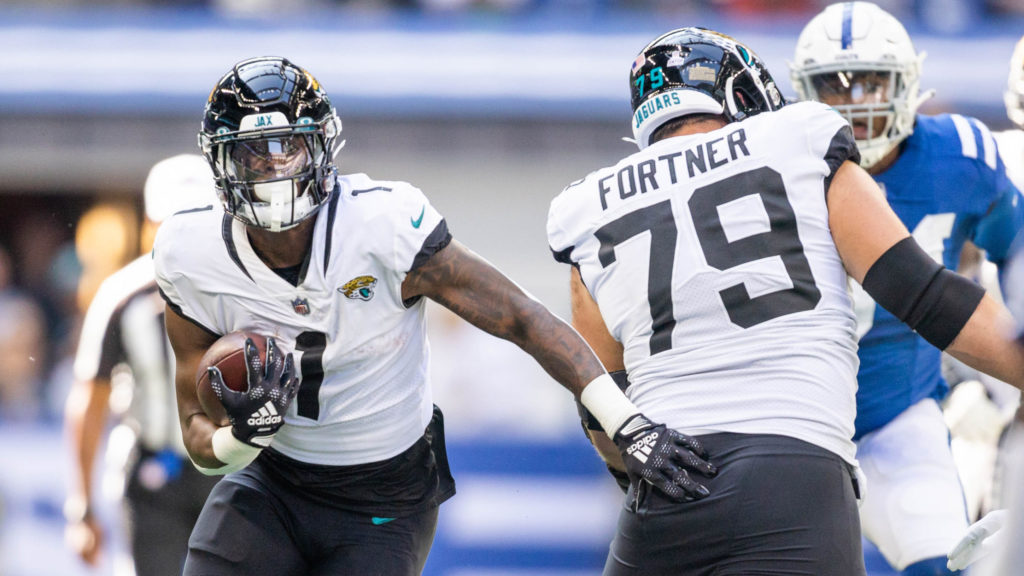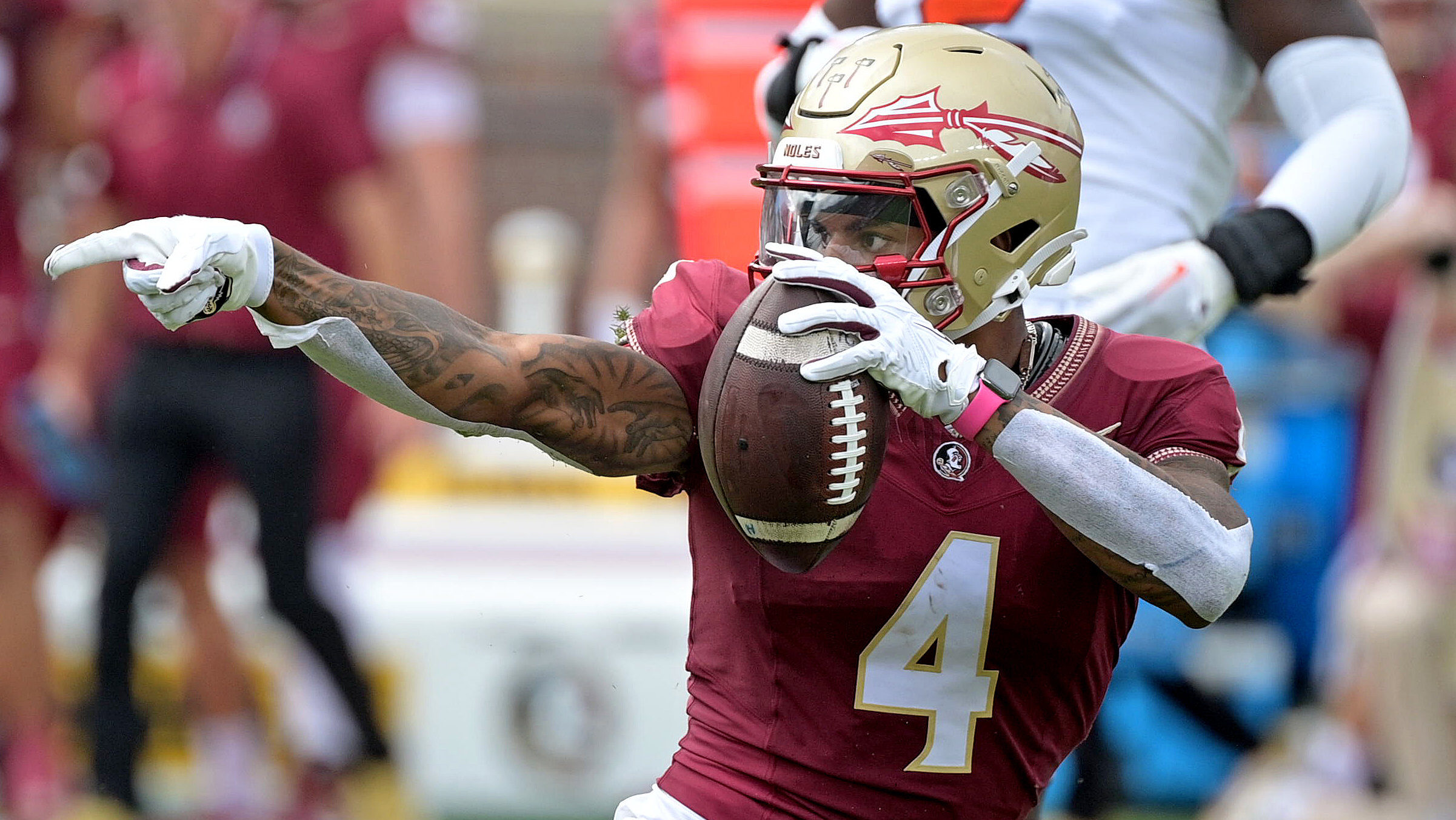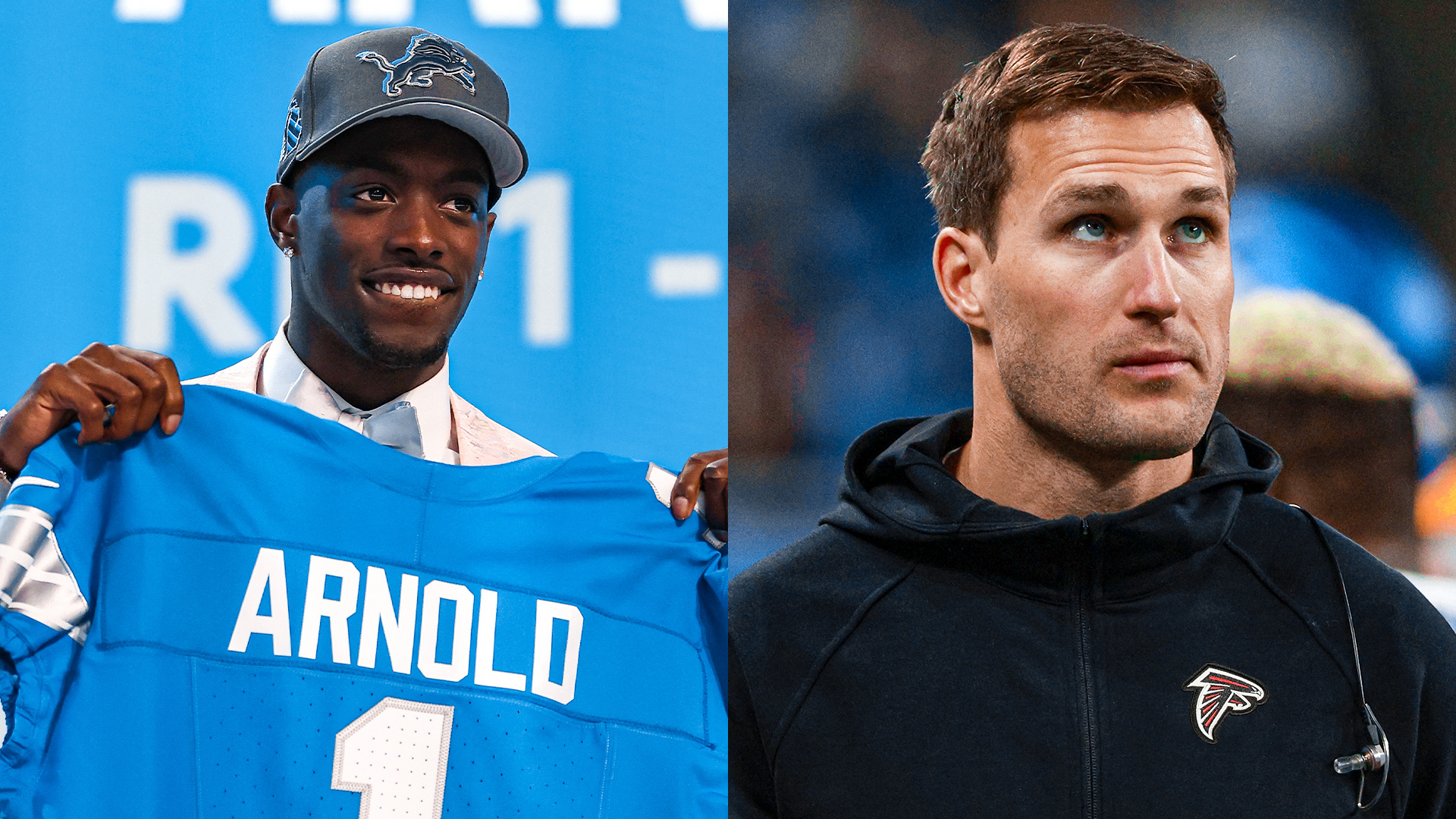Analysis
12/2/22
4 min read
Is Travis Etienne’s Foot Injury a Long-Term Concern?

Travis Etienne missed his entire rookie season after suffering a Lisfranc injury to his left foot during his second preseason game that required surgical repair. Etienne’s rehabilitation went smoothly without any hiccups where he was able to resume activities ahead of schedule per reports. After a modest start to begin the 2022 season where Etienne garnered 10 or more carries once during the first four weeks, he has met that threshold in each game since. His streak ended during Week 12 where the Jaguars cautiously ended his day after he suffered a left foot sprain.
Etienne, the 25th overall pick during the 2021 draft, has been a force for the Jaguars during his debut season. Etienne currently ranks sixth in broken tackles and seventh in missed tackles amongst running backs. Of running backs with over 100 attempts, he ranks third in yards per attempt and second in broken and missed tackle percentage per attempt.
Obviously, Etienne is a tough runner that is challenging for defenders to bring to the ground. It takes a tremendous amount of power, agility, and contact balance to shed tackles effectively. Each of these attributes requires a stable foot to serve as a fulcrum for his movements. What will the immediate impact of Etienne’s injury be and are there any long-term ramifications from that injury to be concerned about?
To be clear, a Lisfranc injury is an injury to the midfoot complex that involves any bony or ligamentous damage to the tarsometatarsal joints. Hearing the term Lisfranc injury is usually associated with a severe injury requiring surgery but that is not always the case. We saw this occur before the 2022 season began when reports emerged that Steelers running back Najee Harris was dealing with a Lisfranc sprain. He has not missed a game this season due to his foot injury. In essence, Lisfranc and midfoot joint injuries can be used interchangeably which can lead to confusion.
As is the case with many types of injuries, Lisfranc injuries have varying degrees or grades to gauge the severity of the disruption. Lower grades (grade 1) correspond to less overall damage whereas higher grades (grade 3) are attributed with a greater disruption of the complex resulting in greater instability. Grade 3 injuries are the typical Lisfranc injuries that are publicized in the media as having season-ending surgery and grade 1 injuries are the less talked about ones that can be confusing in the cases of Harris when they are labeled as a Lisfranc injury as we discussed earlier.
The typical cause of foot sprains or Lisfranc injuries are contact injuries where the foot experiences a loaded force with the foot pointed downward and slightly rotated. This is what happened to Etienne during Week 12 and occurred earlier in the season against the Colts in Week 6. Late in the Week 6 matchup, Etienne was tackled and subtly limped off the field. He finished the game and has had no apparent issues since, as he has been managing a solid workload without making an appearance on the injury practice reports.
Both Etienne’s current injury and the instance of pain our scouts identified earlier this season occurred to his surgically repaired left foot. Research suggests that a grade 1 injury results in about three days without participation. Etienne practiced in a limited capacity Wednesday and Thursday being on track to suit up for Week 13. After his injury, the Jaguars have stated that he was cleared to return Week 12, but they opted on the side of caution to end his day early.
Minor foot sprains, grade 1 and grade 2, demonstrate no significant impact on an athletes’ availability during the season and no evident persistent problems. That bodes well for Etienne’s recent injury, but the fact that it occurred to his left foot that has a history of a significant disruption is an interesting phenomenon.
As noted, Etienne grades highly amongst his peers in his ability to break and miss tackles. It’s an element of his game that makes him stand out. We also mentioned how the common mechanism of injury for a foot sprain is a loaded force with the foot pointed downward and slightly rotated. That is a common circumstance that Etienne finds himself in as he is running through tackles. It will be worth tracking and interesting to see how his left foot holds up given his injury history and a running style that requires him to do things that could be problematic.
James Rodriguez PT, DPT contributed to this report.







